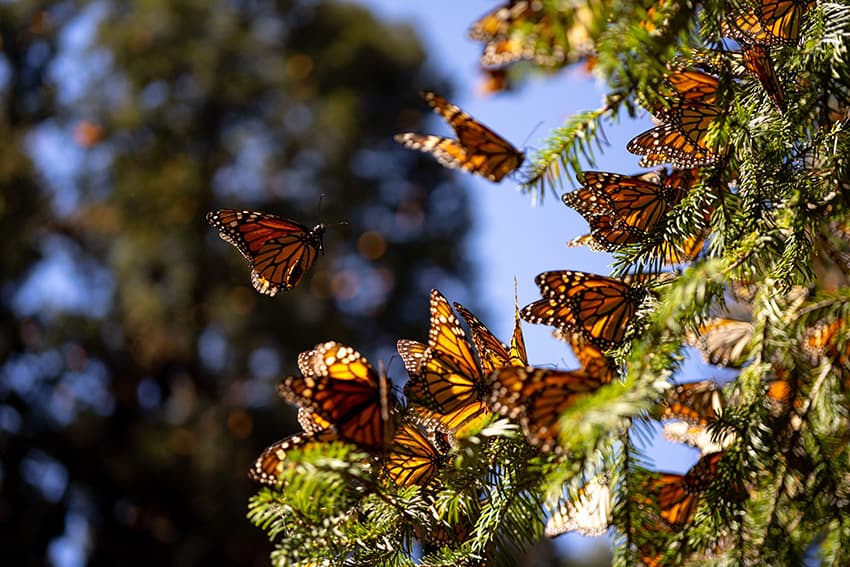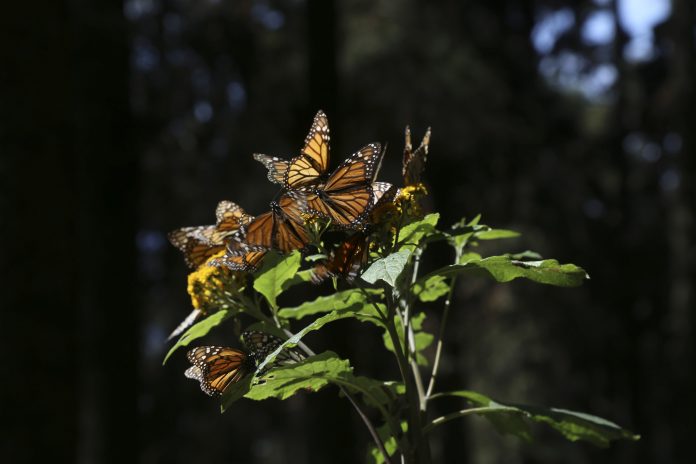The population of eastern monarch butterflies overwintering in central Mexico this winter dropped 59% from the same period last year, a World Wildlife Fund (WWF) survey shows.
The survey is carried out annually in partnership with organizations including Mexico’s National Commission for Protected Natural Areas (Conanp). It measures not individual butterflies, but the acres of land that monarch colonies occupy. In the 2023-2024 season, colonies covered only 2.2 acres of forest, as opposed to 5.5 acres the previous winter. This year’s data represents the second-smallest area of land occupied since monitoring began in 1993.

North America is home to two major monarch populations divided by the Rocky Mountains. The larger population, which breeds east of the Rockies in the central and eastern parts of Canada and the United States, migrate up to 3,000 miles each year to overwinter on a handful of mountaintops in the Trans-Mexican Volcanic Belt.
In 1980, the Mexican government designated a 56,000 hectare area on the Michoacán-México state border as the Monarch Butterfly Biosphere Reserve, and conservation efforts have traditionally focused on this area. This season’s largest monarch colonies were registered outside the reserve, however, in México state.
“Fewer monarchs hibernating in their traditional forest habitat in Mexico greatly concerns all of us,” said WWF Mexico general director Jorge Rickards. “This is not the first time we’ve observed changes in the locations of the largest monarch colonies. It’s telling us that we need to intensify conservation and restoration measures not only in the Monarch Butterfly Biosphere Reserve, but also outside of it.”
Monarchs have made headlines several times in recent years due to spikes in their winter colony populations, with increases registered in 2022 and 2021. But their long-term trend has been decline, according to the International Union for Conservation of Nature (IUCN), whose risk-rating system classifies them as vulnerable to extinction. The IUCN reports that the eastern monarch population shrank by over 85% between 1996 and 2014.

Scientists say that the recent drop in monarch numbers is attributable to high temperatures and drought in Canada and the U.S. which have affected the abundance of milkweed, the only plant which monarchs lay their eggs on and the only food source for monarch larvae. Milkweed and other nectar plants that adult monarchs feed on have also been lost due to increased use of glyphosate — the most widely used herbicide in the U.S. — and land-use change tied to increased planting of glyphosate-tolerant corn and soybeans.
Environmental and political issues also affect monarchs once they reach overwintering sites in Mexico. The pine and fir forests where monarch colonies form are affected by illegal logging, a lucrative criminal economy. Deforestation fell last year, however, and does not appear to be a factor in this year’s colony decline.
Speaking on a panel with U.S. and Canadian counterparts, Conanp director Adán Peña Fuentes noted that the federal government has taken steps to preserve monarch migration, including a 2020 decree to phase out glyphosate usage in Mexico. Peña also emphasized Conanp’s work with the private sector to support conservation efforts. “We will coordinate with these actors along the Mexican migration route to establish a national strategy for monarch conservation in Mexico and on the continental scale,” he added.
With reports from the World Wildlife Fund, Milenio and The New York Times
